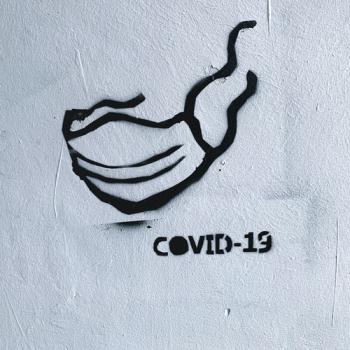
We ran across this LinkedIn post written by a Christian paralegal and thought it served as a good example of someone applying their faith to the questions of their job. We’ve reprinted it here with some small adaptations.
Most of the time, I don’t pay much attention to the opinions that come out of the Court of International Trade (CIT), but when the case involves a contested customs categorization, I can’t pass it up. The often arcane reasons for why the Snuggie™ is a blanket, rather than an article of clothing, for instance, actually make for some fascinating reading. These cases often turn on metaphysical questions: What is the article’s purpose? What are its essential attributes?
When the case matter involves a supposedly festive article, then the controversy can’t help but get downright theological. For example, just this week, WWRD U.S., LLC brought a case before the CIT contesting that Customs had incorrectly categorized several articles of dinnerware and crystalware under customs headings descriptive of such “utilitarian articles” more generally, and imposed the mandated import tariffs.
Holiday-inspired designs appear on these articles, the plaintiff argues, thereby making them festive articles reserved specifically for celebrating time-honored, holiday meals; U.S. Customs imposes no duties on festive articles, and thereupon rests WWRD’s legal standing.
But because we are arguing over the nature of ritual dinnerware, the case necessarily and more fundamentally brings up theological questions: What makes a Passover Seder different from Thanksgiving dinner (One might also read: “Why is this night different from every other night?”)? Is there something inherently ritualistic about the buffalo dip that I inhale on every Super Bowl Sunday?
The vast, complex categorization list for all imported items, the Harmonized Tariff Schedule of the United States (HTSUS) specifically defines festive articles as:
Utilitarian articles of a kind used in the home in the performance of specific religious or cultural ritual celebrations for religious or cultural holidays, or religious festive occasions, such as Seder plates, blessing cups, menorahs or kinaras. (HTSUS 9817.95.01)
WWRD argues for a broader interpretation of ritual, choosing to focus on the repetitive nature of ritual actions, citing in support Merriam Webster’s definition and anthropology journal articles. What is crucial to ritual is that people do it every year at around the same time and in approximately the same way. Christmas dinner, for example, might not require specific, sacred dinnerware, but special centerpieces, clothing, and dinnerware are nevertheless welcome and, more or less, expected.
But this definition, the Customs Department maintains, is overly broad, pitching an immense tent into which all manner of family meals may enter. Some families share Sunday lunches and dinners: is their dinnerware festive, too? Rituals are not only assiduously repeated, they consist of “formal and words and actions.” In other words, rituals must be liturgical. I offer no special litany for the buffalo wing dip, no formulaic blessing over the paper plates on which I serve it, and perform no specific action commemorating its consumption. I might pray over it, but the exact words do not matter, and my prayer is essential to my religious beliefs, rather than to the Super Bowl.
The CIT acknowledges aspects of the plaintiff’s argument, but ultimately finds in favor of the defendant. Thanksgiving and Christmas dinners are, in fact, important parts of many families’ holiday celebrations, but they are not liturgically codified and inherently charged with symbolism. Conversely, everything, from the food to the dishes to the conversation, takes on immense religious and symbolic value in a Passover meal.
Furthermore, the HTSUS definition of “festive article” refers to explicitly religious items as exemplars, and in light of a principle of customs law jurisprudence (the eiusdem generis principle) any article seeking inclusion under a heading which makes use of representative examples must share their essential characteristics or purposes.
This case, and others like it, are intriguing because they are a little-known venue for the broader debate concerning the relationship between Church and State. Religious items receive duty-free treatment, while their more profane counterparts don’t. And there are countless products which inhabit the vast grey space in between, just as many small, closely-held corporations, such as Hobby Lobby, operate according to explicitly religious mission statements. There are a couple of aspects to this case which I will consider from a theological standpoint, but those will come in a later post.
Stay tuned for a follow-up post!












